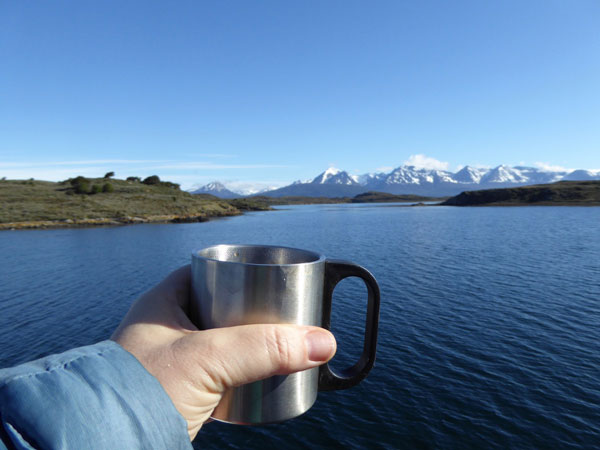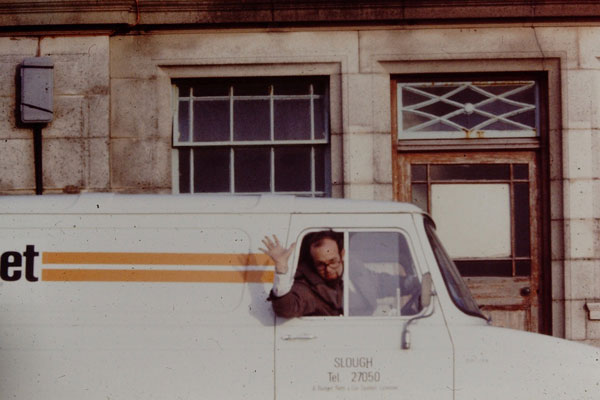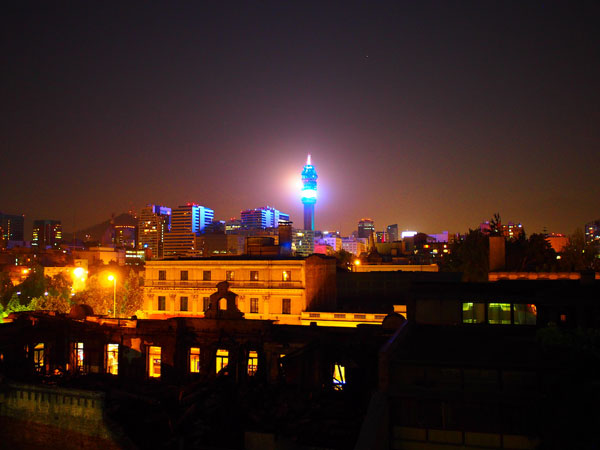It all started with an innocent conversation with another traveler in the hallway of the spacious and wood-paneled Vancouver Convention Center earlier this year at TBEX. We’d run into each other before in NY, Santiago, and then Vancouver. He’s one of those on-the-roaders, no permanent address people. Not me, got a depto which I love an irrational amount, despite having woken up here just the other day and having had no idea where I was. Santiago, baby.
Anyway, Anil and I were talking about where our paths might cross next. He posited Venezuela, and I quickly discarded it. I’ve got some peeps in and around Venezuela and it’s going to take some time before I think it’s a good destination for me. I have faith, fifteen years ago you wouldn’t have wanted to visit Peru, and now I’ve been thrice, and Colombia used to be a no-go-zone for foreigners, and now everyone’s shouting from their local 3g network how awesome Bogotá and Cali are (I’ve only been to Cartagena de Indias, so I can’t opine). Venezuela off the table, we talked about other places I’m interested in in South America. Suriname. Suriname. Suriname. It just kept coming up.
And we did some research. First off, how to get to Suriname? There are flights from Holland, Miami, Aruba, Curacao, Trinidad, Belem (Brazil) and Guyana. At the time (though this has since changed), I needed a visa to go to Suriname (now you can get a tourist card, apparently at the airport, and apparently for $25, not the $110 plus a few days in Trinidad I paid to get there, and no I’m not that bitter, because I have a multiple entry visa now, and plus, Trinidad, and no, I couldn’t get a visa in Santiago, as Chile has no diplomatic relations with Suriname). The whole process was like figuring out an LSAT logic problem. And yes, I have experience with that. How to get me and Anil to the same place to get to Paramaribo at about the same time, how to get more pages in my passport, how to get a visa, how to not lose my everloving mind over figuring this all out, when there is almost no information in English about Suriname.
In the end, Anil had to bow out. But I was amped, ready, had spent hours waiting for the extra passport pages (no longer free, hell’s bells they’re $82 now, and I’m going to use the hell out of them if I get the chance). I was frustrated, but undeterred. I asked around on the net, and of course, at MatadorNetwork, and finally made contact with Karin-Mariejke and Coen who I’d heard had been to Suriname, I also talked to a writer and guesthouse owner in Colombia who a) I know through work and b) saw a tweet where I was begging for info about Suriname. He’d spent some time in Paramaribo a few years ago and answered a few of my questions. Thank goodness for social media, without it I’d have had no real info from actual people who’d been to Suriname. Actually, now that I think of it, thank goodness for my many, many gigs, through which I was able to score first-hand info.
What I essentially needed to know was the following:
Am I nuts for going to Suriname by myself?
Will I find it so debilitatingly expensive as to be reduced to the saltines-and-juice diet I’ve been known to adopt in the past?
The crazy question has to do with a) whether I am putting myself at unnecessary risk b) whether Surinamese are friendly enough to where I would not feel lonely if I didn’t come into contact with other tourists and c) whether by going alone I would be at a disadvantage for transportation/tours etc and d) (related to the last question), is Suriname crazy pricey if you go alone.
Safety/risk:
In general terms, I can say that I have seldom felt as safe as I did in Suriname. I was mainly in Paramaribo, across the river in Commewijne, Nickerie and Pikin Slee, and points in between. With the exception of the zany jostly energy of the Waterkant (Waterfront, where the central and Maroon markets are in Paramaribo and where you get some of the buses), I never even swung my backpack around to the front. I didn’t take out the megacam in the market or on the ferry to Commewijne, and was cautious to keep it well at hand and/or bagged at other times. I know that in a country with as much mining and drug trafficking as Suriname (though I saw none of the latter, besides a couple of zoned out jungle guides and smoking-up-Rastafarians in the interior, but apparently large quantities of cocaine are moved through Suriname, which I never saw any evidence of), there must be an underbelly. However, if you walk all over Paramaribo as far as you can get on foot from the colonial center, and rent a bike and ride as far as a normal (or abnormal) human might ride, and take visual cues, it is fine. Fine. Fine. But dead as a doornail after 8 PM on the streets, which means you might end up taking a taxi home from dinner. Minimum price about $2.25 US, a long taxi ride costs about $7 US.
Friendliness:
Heavens to mergatroid, do not ever be in a rush in Suriname. Everyone you meet will talk your ear off. In English, Dutch, Srnan Tongo, Sarramacans, Aucan, Hindi, Javanese (Indonesian), Chinese or whatever other language you might have in common. Friendly. Friendly. One warning here: you will be asked a thousand and one times “Why did you come to Suriname?” Turns out saying, “I’m from a former Dutch colony, myself (NY)” only goes so far, and then they really want to know why you’re there. I also met some Spanish-speakers, a Surinamese woman who is a linguistic genius, and a Syrian guy who lives in Panama, and we talked at the oneg (post Friday-night services meal/party) at Neveh Shalom, the synogogue, in our multiple accents.
Cost/Complication:
On some levels, it is more complicated to be in Suriname on your own than with a friend. If you are two people, you can always find someone to give you a tour. But for just one, the price can be prohibitive. For example, on a day when few/no buses were going to Atjoni (say: atchoni), I could have hired a taxi (on Sundays traffic is unpredictable, and I was told no one goes to Atjoni on Sundays, which turns out to be untrue, one of the few times I was given misinformation in Suriname). The price of the regular “bus” (a van filled with 8 adults, one child and about 250 kilos of cargo in my case) was 70 SRD (about $22). If I’d taken a taxi by myself, it would have cost more than ten times as much. With a group of four, we’d probably still have done it, but for one person, there was no way. On the other hand, as just one person, I was easy to add onto an existing tour, like the one I did with Stephanie in Bigi Pan for birdwatching, and I actually was able to hitch a ride on the river to Pikin Slee with a guy I’d met earlier, because there’s often more room for just one person. The Pikin Slee boat was a big deal because it saved me two hours of waiting in the broiling heat in a dusty port, and my patience was already a little scarce from the morning wait/busride. It also turned out not to cost me anything, but your mileage may vary.
Debilitating Priciness:
If you want to get to know the interior, like take a small plane and a boat two days up a river, you will pay through the nose. It is not unheard of for Dutch tourists to spend 3,000 euros over the course of two or three weeks. They stay in nice places, charter planes, go with a guide, etc. If however, you are willing to sleep with a fan/in a hammock and take cool showers, make your dinner at the occasional street stall, take regular public transportation and not run too crazily far afield into the interior, you can certainly spend $1,000 or less for two weeks. But you won’t see a big chunk of the culture or nature, so it’s something you have to weigh and think about. Whatever you do, you’l have to take out money from the ATM or bring US cash or Euros and change them. There are lots of places to change dollars and Euros, and two major banks that you can use to take out cash, but pretty much no one accepts credit cards from outside of Holland. The maximum amount you can take out daily is 1,000 SRD, or about $320 US.










You are adventurous and that is awesome. I’m glad your trip went well. Can’t wait for more story like and picture like details.
Not as adventurous as you might think, it seems sometimes, though it depends on your starting point. Thanks for dropping in. There will be many stories, there will. Some I will even give away here on the blog!
I honestly can’t wait to read more, I’ve been looking forward to hearing how Suriname was and experience a small bit vicariously through you.
I think you’ll really like it when you go, though you won’t have my witty commentary. Some other place in the world, someday. Hope you are well, and you know I’m sorry you couldn’t make it, but totally understand.
Looking forward to upcoming chapters, especially since any solo trip to Suriname on my part has not yet even made it onto the waiting list of my wildest dreams… livin through you sister!! Bring it on!
well, as I mention, it was not originally thought of as a solo trip, but since that’s how I do most of my travels, no harm no foul. And you’ve got some stories to tell yourself, from Morocco, so I’ll be waiting to hear those!
I am attempting the same thing right now, and am getting hung up on the tourist card. The state department website says you can buy one in the PBM airport, but I called the consulate in D.C., and they said that I could not. After scrounging around on the Suriname website, I also found text that said it’s not possible to buy this in Paramaribo. See here: http://www.surinameembassy.org/tourist_card.shtml
well, two days before the change was to occur, I mentioned it to the surinamese embassy in Port of Spain, and they hadn’t heard anything. What about the airlines? they are responsible for flying you back if you don’t have the card, I’d think they’d know. Possible? Sorry you’re having so much trouble. I wish I could lend you my 5-year visa, but we’d get in a world of trouble!